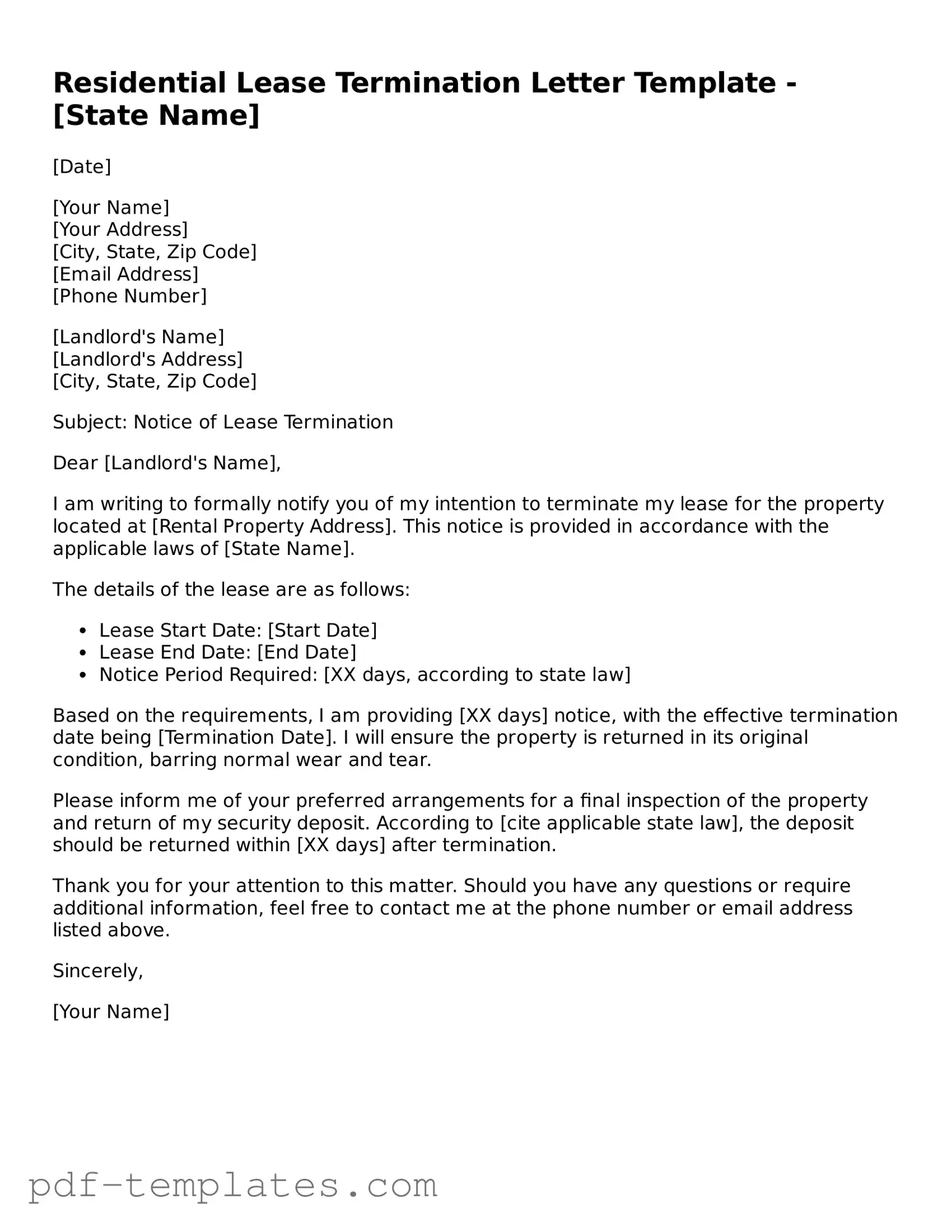A Notice to Quit is a document often used in rental situations to inform a tenant that they must vacate the premises. Similar to a Lease Termination Letter, it serves as a formal communication from the landlord to the tenant. The primary difference lies in the context; a Notice to Quit is typically issued due to a breach of lease terms, while a Lease Termination Letter may be used for various reasons, including the end of a lease agreement. Both documents require clear language and a specified timeframe for the tenant to respond or vacate.
A Rental Agreement Addendum is another document that shares similarities with a Lease Termination Letter. This addendum modifies the existing rental agreement, which could include changes to lease terms or conditions. While a Lease Termination Letter ends the lease, an addendum may extend it or alter specific terms. Both documents need to be signed by both parties to be legally binding, ensuring that all parties are aware of the changes being made.
A Move-Out Notice is closely related to a Lease Termination Letter as it signals the tenant's intent to leave the property. This notice typically includes the tenant's planned move-out date and may outline any expectations regarding the return of the security deposit. Like a Lease Termination Letter, it is important for the Move-Out Notice to be clear and concise to avoid any misunderstandings between the landlord and tenant.
A Lease Renewal Agreement is similar in that it involves the continuation of a rental arrangement. While a Lease Termination Letter indicates the end of a lease, a Lease Renewal Agreement signifies the desire to extend the current lease under the same or modified terms. Both documents require mutual consent and clear communication to ensure that all parties understand their rights and responsibilities moving forward.
When navigating the complexities of rental agreements, it is essential to have access to accurate and legally binding documents. The various forms associated with lease termination, such as the Lease Termination Letter and the Eviction Notice, play crucial roles in ensuring smooth transitions between landlords and tenants. For those needing to complete these important forms, resources like Texas PDF Forms can provide valuable assistance in filling out the necessary documentation correctly.
A Security Deposit Return Letter is another document that can be compared to a Lease Termination Letter. This letter is sent by the landlord to the tenant after the lease has ended, detailing the return of the security deposit. While a Lease Termination Letter communicates the end of the lease, the Security Deposit Return Letter addresses the financial aspects of that termination. Both documents are essential for closing out the rental relationship properly.
A Termination of Tenancy Agreement is a formal document that outlines the end of a rental agreement, much like a Lease Termination Letter. This agreement often includes the reasons for termination and any obligations that both parties must fulfill. Both documents serve as official records to protect the rights of landlords and tenants and ensure that the termination process is handled legally and respectfully.
A Sublease Agreement can also be seen as similar to a Lease Termination Letter in that it involves the leasing of property. When a tenant subleases their unit, they may need to terminate their original lease or negotiate terms with the landlord. While a Lease Termination Letter ends the original lease, a Sublease Agreement creates a new rental relationship. Both require clear terms to avoid confusion and ensure compliance with the original lease.
Finally, a Letter of Intent to Vacate is akin to a Lease Termination Letter as it expresses the tenant's desire to leave the rental property. This letter typically outlines the tenant's planned move-out date and may request a final walkthrough of the property. Both documents are important for establishing a timeline for the end of the tenancy and ensuring that all parties are on the same page regarding the transition.
